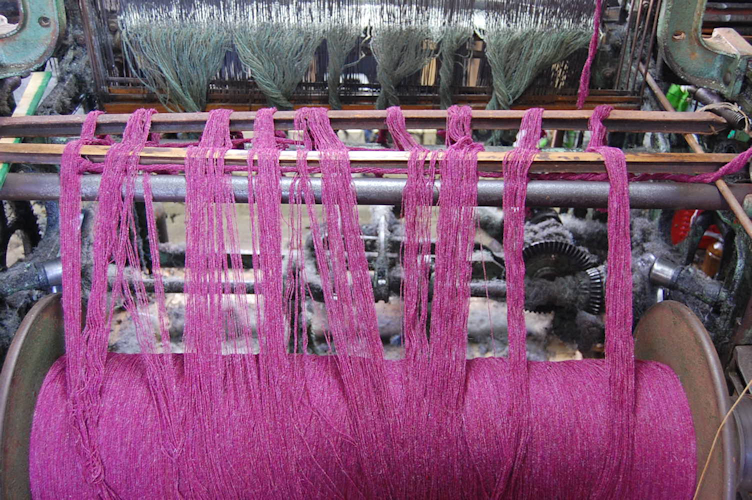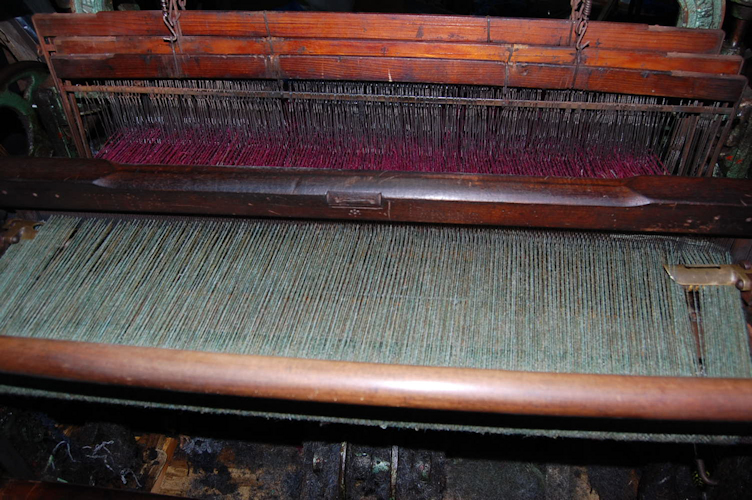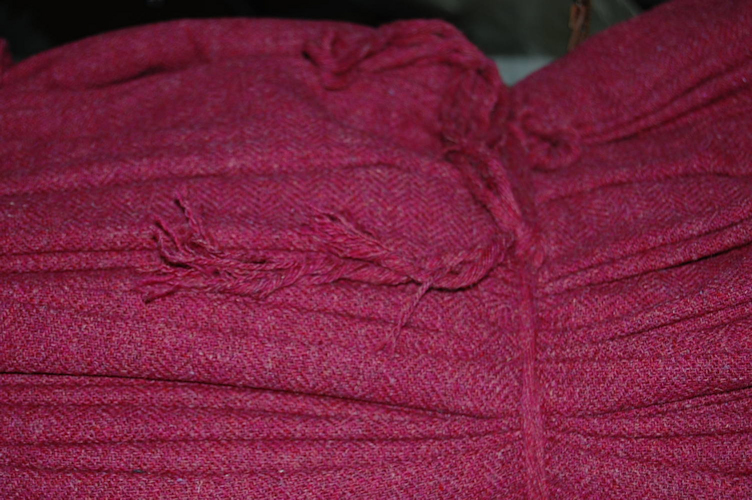Value for Money
Supplying genuine Harris Tweed for a reasonable price
Find out more about the History and Making of Harris Tweed, and how the delicate colours and shades are achieved in the cloth by watching the video.
One of the most desirable wool textiles in the world, Harris Tweed, is produced in the Outer Hebrides of Scotland; on the one island with two names, separated only by a mountain range - the islands of Lewis and Harris.
The story begins with pure virgin wools which are blended together to gain the advantages of their unique qualities and characteristics. Although the wool used to make Harris Tweed is principally taken from flocks reared on the mainland of Scotland, in the early summer the island communities join together to round up and shear the local sheep to add their locally reared wool to the mainland clip.

The wool is taken to the island mills where it is washed and dyed into an endless palette of colours; this 'dyed in the wool' process is unique to Harris Tweed. After drying a predetermined and secret recipe of proportions of the coloured wools are blended together, then carded and spun to produce the spectrum of yarns tint to enhance the uniqueness of the finished cloth. The spun yarn is then warped, where the final pattern of the colours is prepared by winding the threads onto large beams to create the warp.

The warp is delivered, together with bobbins of yarn for the weft, to the homes of the weavers along with a pattern instruction card from the mill. All Harris Tweed must be, by law, handwoven on a treadle loom by the weaver at his own home. Once complete the bolts of raw tweed are collected from outside the croft gate and returned to the mill for finishing.

The 'greasy' cloth from the oily looms is now thoroughly washed and conditioned removing any impurities. The lengths of clean cloth also pass through one more essential quality control activity where careful eyes and experienced hands ensure that there are no imperfections.
Finally, various finishes can then be applied to the tweed to meet the customer's specification before pressing and rolling. The finishing process, like all the other stages in the manufacture of Harris Tweed, must, in accordance with the 1993 Harris Tweed Act, take place in the Outer Hebrides.
After finishing the last and most vital stage of production can begin. The tweed is then presented to the Hams Tweed Authority's inspectors, and if all the necessary regulations have complied with it is stamped with the Certification Mark - or ORB MARK - as it is known throughout the world. The Orb stamp is the mark of authenticity and the woven label issued with the cloth to the customer confirms it.

Harris Tweed is the most famous fabric in the world and certainly, the only one protected by an Act of Parliament Only the skilled craftsmen and women of the Outer Hebrides know how to make it and, by law only they are allowed to do so. Its design and production methods provide weights, colours, and infinite patterns of cloth perfectly suited to the demands of today's fashion and furnishings for both traditional and designer ranges. These skills of hand and eye that weave the strands together have been inherited over many generations and can only be found in the Outer Hebrides of Scotland.
Supplying genuine Harris Tweed for a reasonable price
Reliable and efficient order dispatching and delivery
Each order personally looked after and packed with care
Natural, sustainable and recyclable product
We only offer genuine products